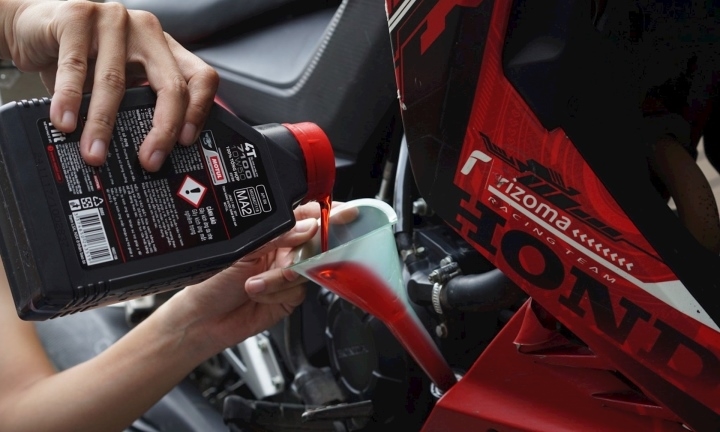To keep the engine of the motorbike running smoothly and quietly, users need to change the lubricating oil regularly and at the right time. Depending on the conditions of use and the environment, the frequency of oil changes may vary. So, how often should motorbike oil be changed?
The frequency of oil changes for motorbikes depends on factors such as the age of the bike, the level of its usage, and how it is used. According to the manufacturer’s recommendation, for a newly purchased bike, the oil should be changed for the first time when the bike has traveled about 500km, and for the second time when it has traveled about 1,000 km. This is because the engine is still new and requires a narrow oil change interval to ensure its longevity.
From the third time onwards, it is recommended to change the oil every 1,500-2,000 km. However, for bikes that are frequently used or often for long-distance travel, it is advisable to shorten the interval between oil changes to ensure the best engine performance.

Some experts in repair and maintenance centers suggest that for scooters, there are two types of oil: engine oil and gearbox oil. In their experience, the gearbox oil should be changed once for every three engine oil changes.
Now, why is it necessary to change motorbike oil regularly?
The engine is composed of many metal parts that generate friction and wear when they collide during operation. The role of oil is to provide a lubricating layer on the surface of these parts, reducing friction and increasing the engine’s efficiency and lifespan.
Additionally, during operation, the engine generates a significant amount of heat. Through continuous circulation, the oil helps to cool and dissipate heat within the engine, as well as removing any carbon residue produced during the combustion process. Furthermore, oil has other functions, such as rust prevention and oxidation reduction.

After a period of usage, the additives in the oil become depleted and deteriorated, which reduces the oil’s effectiveness in protecting the engine. The friction between the metal parts increases, leading to accelerated wear and other damage to the engine.
These issues require the rider to constantly accelerate in order to achieve the desired speed, resulting in significantly higher fuel consumption. Moreover, the worn engine may produce knocking sounds, stalling, or sudden engine shutdown. The unregulated heat generated during operation can also cause overheating, smoke, and even fire hazards.
In addition, as time goes on, carbon residues accumulate in the fuel injection system or carburetor, intake and exhaust valves. The build-up of these residues directly affects the supply and combustion of fuel, resulting in reduced engine power, irregular acceleration, increased noise, and wasted fuel. At this point, the owner may spend a substantial amount of money on engine maintenance, but it may not restore the bike to its original condition.
Now that you understand the importance of regular oil changes and how often motorbike oil should be changed, make sure to follow the recommended intervals to keep your bike durable and running smoothly.
Article source: VTC.vn































